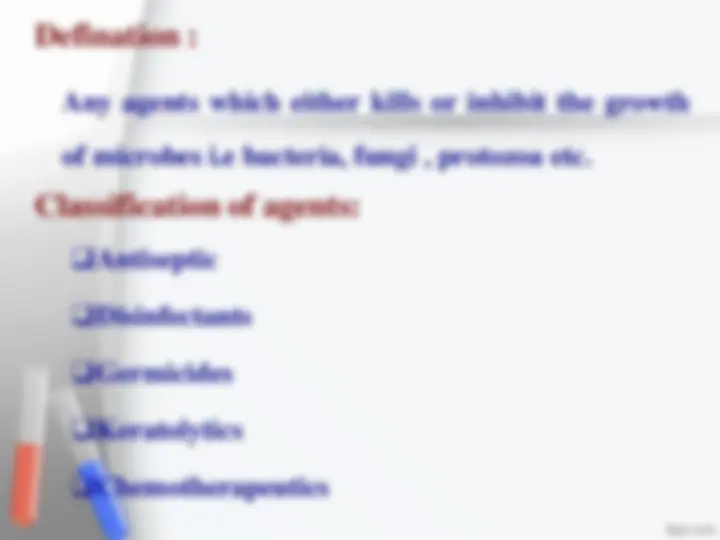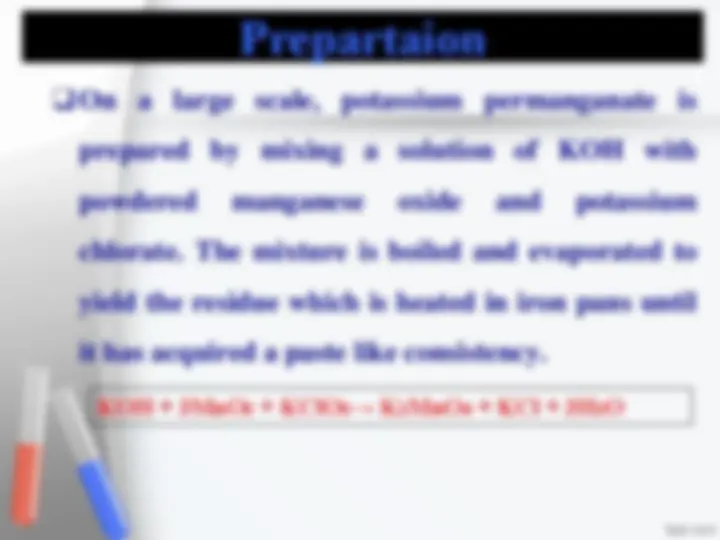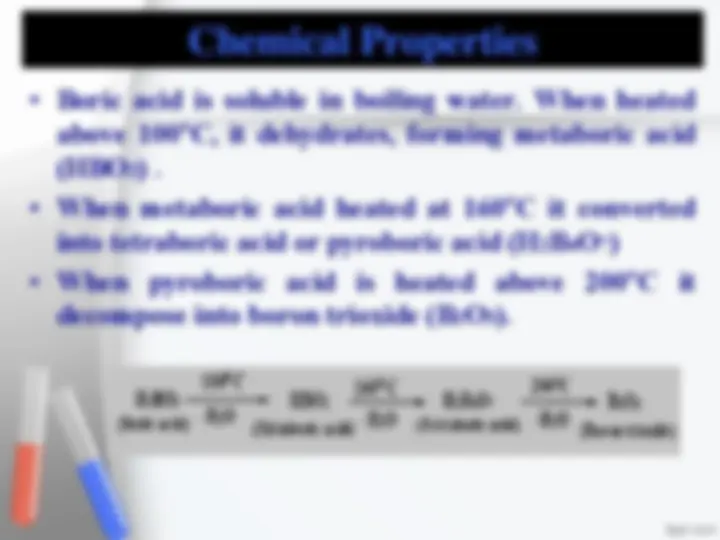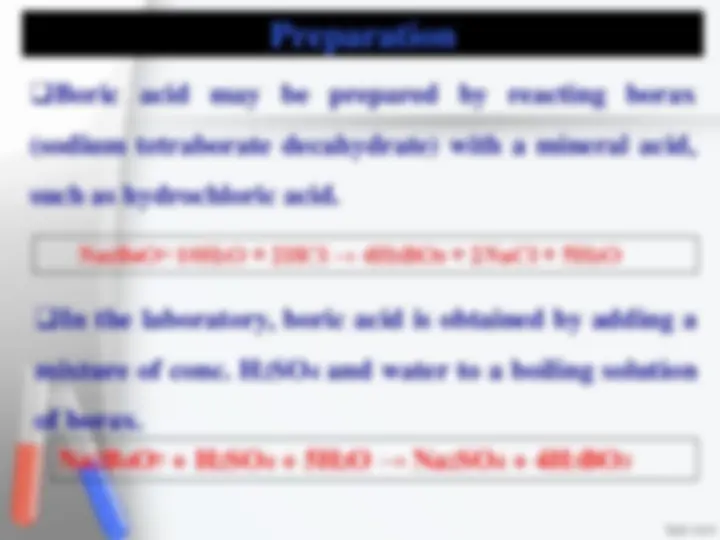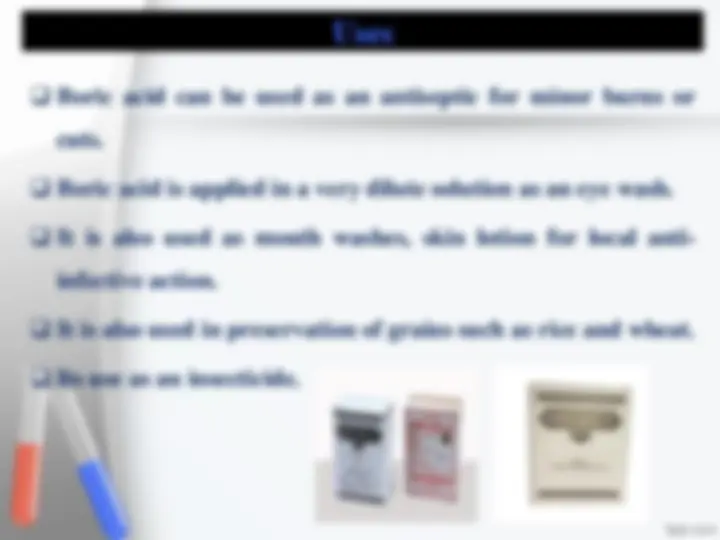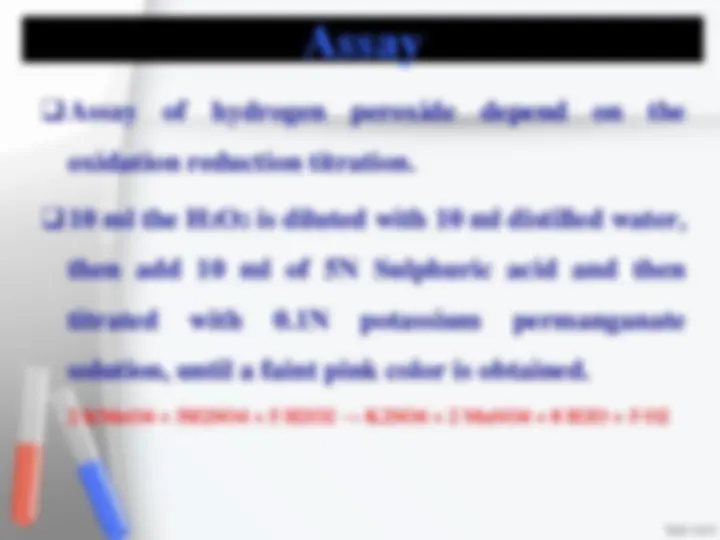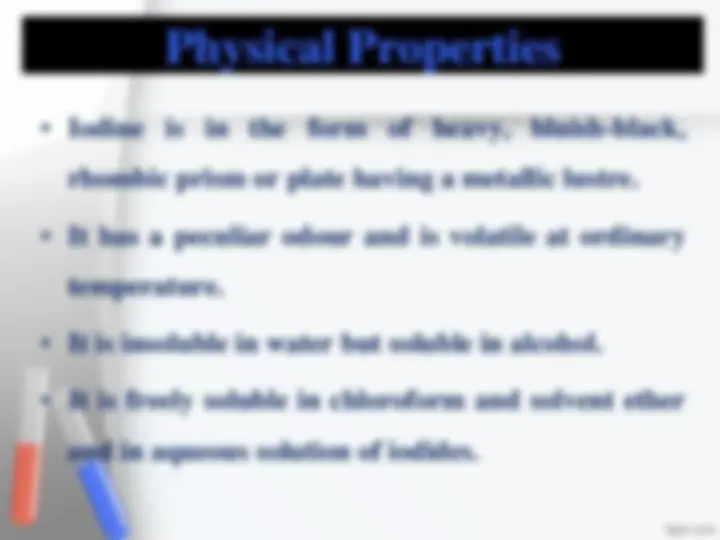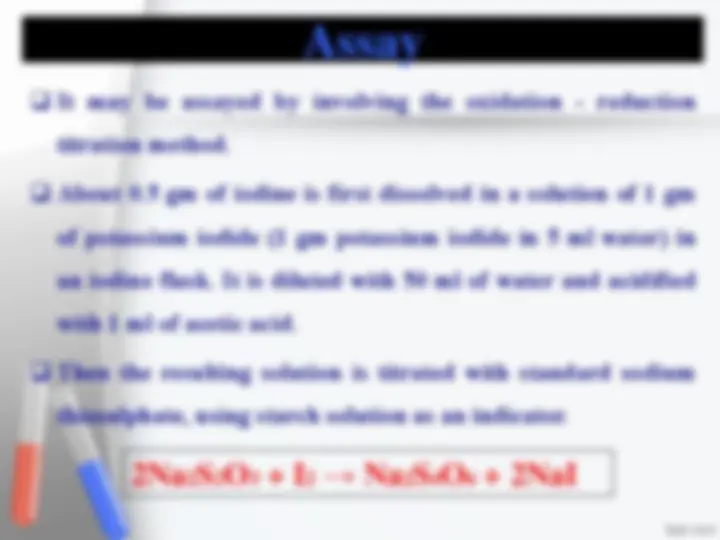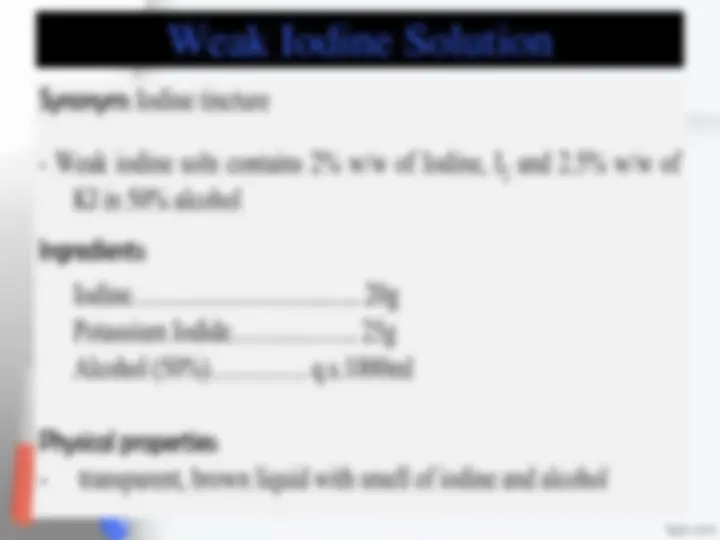Download Pharmaceutical Inorganic Chemistry: Gastrointestinal and Antimicrobial Agents - Prof. Dutt and more Lecture notes Pharmaceutical Chemistry in PDF only on Docsity!
PT 103 PHARMACEUTICAL INORGANIC
CHEMISTRY(THEORY)
KUNAL DATTA
UNIT III : Gastrointestinal Agents
Antimicrobial Agents
Antimicrobial Agents
❑ Agents which prevent infection , by killing
or inhibiting the growth of micro-organism
when applied topically at damaged tissue.
Antiseptic
Disinfectants
❑Disinfectants are antimicrobial agents that
are applied to the surface of non-living objects
to destroy microorganisms that are living on
the objects.
❑ These are the agents which are applied on the skin
to soften the keratin.
Eg: Sulphur, Aluminium oxide
Use : They are used to treat acne and other skin infection
Keratolytic Agents
❑These are the chemical agents which are used in
clinical application of antimicrobial agents to treat
infection diseases.
Chemotherapeutics Agents
- Microorganism contain many important ‘protein
structure’ (e.g enzyme) to survive.
- If there is minute changes in protein structure , the
protein becomes non functioning and inactive.
- There are three types of mechanisms for changing
their protein structure.
➢ Oxidation ➢ Halogenation ➢ Precipitation of Protein
Mechanism of oxidation of proteins
- Oxygen liberating compound (Oxidizing agents) like peroxide and peroxyacids , permanganate give action by this mechanisms.
- These antimicrobial agents cause oxidation of active functional group present in protein or enzymes and inactivate them.
Mechanism of Action : Oxidation
- Metal containg (e.g., mercury, arsenic and antimony) compounds give action by this mechanisms.
- Metal binds with important group present in protein. This protein metal complexation (Chelation) inactivates the protein or enzymes.
Mechanism of Action : Precipitation of Protein
Classification of Antimicrobial Agents
Potassium permanganate
Molecular formula
KMnO
Molar mass
158.034 g/mol
Synonym
Condy's crystals; Permanganate of potash; Hypermangan
Physical Properties
- Appearance : purplish-bronze-gray needles
- Odor: Odourless
- Taste: Bitter with metalic taste
- Density : 2. 703 g/cm 3
- Melting point: 240 ° C
- Solubility: Freely soluble in water and alcohol
Prepartaion
❑On a large scale, potassium permanganate is
prepared by mixing a solution of KOH with
powdered manganese oxide and potassium
chlorate. The mixture is boiled and evaporated to
yield the residue which is heated in iron pans until
it has acquired a paste like consistency.
KOH + 3 MnO 2 + KClO 3 → K 2 MnO 4 + KCl + 3 H 2 O
Prepartaion ❑ Potassium manganate when treated with Hydrochloric acid 3 K 2 MnO 4 + 4 HCl → 2 KMnO 4 + MnO 2 + 2 H 2 O + 4 KCl ❑ Potassium manganate when treated with Carbon dioxide 3 K 2 MnO 4 + 2 CO 2 → 2 KMnO 4 + 2 K 2 CO 3 + MnO 2

